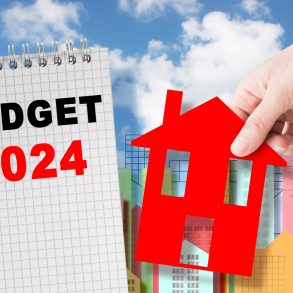 We’ve all heard about the impending fiscal calamity south of the border. The issue, of course, is whether lawmakers in the U.S. will increase the $14.3 trillion debt ceiling by August 2 (or thereabouts) so the U.S. can pay its bills.
We’ve all heard about the impending fiscal calamity south of the border. The issue, of course, is whether lawmakers in the U.S. will increase the $14.3 trillion debt ceiling by August 2 (or thereabouts) so the U.S. can pay its bills.
That’s got many Canadians concerned about how this mess will impact interest rates north of the border.
From the looks of things, it’s not quite panic time. The odds are good that U.S. lawmakers will come to an 11th hour agreement if you believe what yields in the $13.5 trillion dollar treasury market are telling us. The benchmark 10-year U.S. note has remained calm, barely moving in the last few weeks. Most other credible sources, including the Bank of Canada’s Mark Carney, also expect a resolution by the deadline.
That said, the outcomes at this point are completely uncertain for two reasons: 1) There’s no assurance that Republicans and Democrats will come to terms in time; and 2) a default is totally without precedent in the U.S.
TD’s chief economist Craig Alexander writes, “The impact on Canada could range from a hiccup in our base-case economic outlook, to one in which we are thrown back into a recession that could have a global reach.”
If the U.S. can’t meet its obligations on time, TD senior economist James Marple says simply: “We have no idea how bad it could be.”
Neither do we. Nonetheless, we’ve taken our best guess at two of several possibilities and their potential implications:
Possibility #1: The debt ceiling is raised on time
 The good news: A crisis would likely be averted (for now). A Democrat/Republican compromise buys time for the U.S. to figure out how to stem its red ink. This predicament might even provide enough incentive to make headway towards balancing the U.S. budget (which would have a downward influence on North American interest rates long-term).
The good news: A crisis would likely be averted (for now). A Democrat/Republican compromise buys time for the U.S. to figure out how to stem its red ink. This predicament might even provide enough incentive to make headway towards balancing the U.S. budget (which would have a downward influence on North American interest rates long-term).
The bad news: The world has been lastingly reminded that U.S. government debt is not as “risk-free” as once thought. The rating agencies may give the U.S. a limited amount of time to put forward a credible deficit reduction plan. If it doesn’t, America’s haloed “AAA” debt rating could eventually be cut. That could shock financial markets and put us back in crisis mode.
Potential Interest Rate Impact: A Democrat & Republican debt deal would likely entail a slashed U.S. budget. That could slow the economy and weigh down yields. Rates could be further influenced by:
- A ratings cut:
- If the debt ceiling plan is deemed too risky by the market, ratings agencies could cut America’s debt rating, driving up yields up in the short term. The rate spike could be severe in the short term but probably not extreme in the long term (given the liquidity of the American debt market and the U.S. dollar’s primary reserve currency status).
- We’ve seen TV analysts speculate that the short-term impact would be a 50+ basis point spike in long-term U.S. rates.
- U.S. yields might then settle down to roughly a 25 basis point premium over today, suggests Blackrock Analyst Rick Reider.
- Canadian and U.S. bond yields are 95% correlated. As a result, our treasuries would likely reflect a portion of that increase (at least in the short term). That would boost fixed mortgage costs here by some fraction of a percent.
- Budgetary progress:
- If the U.S. eventually tabled a balanced budget, yields could drop back down (somewhat similar to how they did in Japan after its 2002 ratings cut).
Possibility #2: The debt ceiling is not raised in time
 The good news: In simple terms, there are two types of government default: default on debt obligations and default on non-debt obligations (wages for government employees, the military, social security, etc.). The most crucial priority in the short-term is making principal and interest payments to holders of U.S. treasuries. Fortunately, the U.S. can still pay bondholders for a period of time. That means an actual “debt default” would likely be averted, hopefully long enough to permit a resolution.
The good news: In simple terms, there are two types of government default: default on debt obligations and default on non-debt obligations (wages for government employees, the military, social security, etc.). The most crucial priority in the short-term is making principal and interest payments to holders of U.S. treasuries. Fortunately, the U.S. can still pay bondholders for a period of time. That means an actual “debt default” would likely be averted, hopefully long enough to permit a resolution.
The bad news: As the U.S. Treasury states, an impasse after Aug. 2 would merely be “default by another name.” The U.S. would undergo a severe fiscal shock with most of the government shutting down. America’s debt rating might very well be cut, thus driving up yields (and hence fixed mortgage rates). Canada’s economic outlook could be downgraded as well since we’re such a huge trade partner with the Americans.
Potential Interest Rate Impact:
- Long-term U.S. rates would soar in the short-term.
- Canadian rates could follow in sympathy, but to what degree is unknown. (Longer-term bonds lead fixed mortgage rates)
- To battle the economic contagion, the Bank of Canada would leave our overnight rate lower than it otherwise would. That would likely keep variable mortgage rates low.
- In the short to medium term, default could spark a rocketing loonie (versus the U.S.) and put the brakes on the Canadian/global economy. That would exert downward pressure on rates over time.
- Canadian rates might also be helped by asset rotation out of U.S. treasuries and into Canadian bonds. As more people buy Canadian bonds it lifts bond prices and lowers yields (and fixed mortgage rates).
*******
If another economic crisis does ensue, the odds favour variable mortgage rates over longer-term fixed rates.
If you’re a homeowner or prospective mortgagor who is concerned by all this, the best bet is to wait until next week and see how things play out. Then speak with a mortgage professional.
Rob McLister, CMT







Nice analysis Rob. We can hope that the deadlock gets resolved sooner. What remains to be seen that how the bond market acts after all over keeping US forth coming election in mind.
If Congress cannot work this out I have a feeling it will mark the end of the US as THE economic superpower. Canadian exporters would be well advised to find other countries to sell to.
Thanks for the info !
Very helpful as usual !
There are a number of scenarios that can play out. While there’s no doubt that the debt stalemate in the U.S. a serious issue that will have world-wide repercussions, it’s going to be rather entertaining to see how the markets react.
If the U.S. ends up being downgraded or it defaults on its debt obligations, there are a number of things that can happen:
1) Investors shun government bonds altogether, causing yields to spike. It doesn’t help that the current crisis in the U.S. is aligned with a peripheral debt crisis in Europe. After all, if U.S. treasuries, which are regarded as the safest bonds in the world, aren’t safe, then who is? Some investors will continue to hold U.S. debt but the premium will definitely go up.
2) Credit markets enter crisis mode: many people don’t realize this but U.S. treasuries play a vital role in the repo markets. Simply put, banks post treasuries as collateral to borrow funds from other banks. Since treasuries are regarded as ultra safe high quality collateral, banks can borrow with a minimal haircut. But if the credit rating of U.S. debt is cut, banks will have post additional collateral to borrow in the capital markets. It’s no coincidence that Canadian banks have been piling up on cash for the last week or so. They’re “planning” for some degree of disruption and want to take advantage of low interest rates while they can.
3) Mortgage rates could actually head down if there’s a strong in-flow of capital by investors towards the Canadian dollar (as well other currencies regarded as more stable than USD such as the Australian dollar, Swiss franc, and Swedish krona). Swiss franc, for example, is trading at record highs against the dollar because Switzerland’s central bank keeps more reserves in gold than other central banks.
But note that the latter can actually complicate things for the Canadian economy. It was reported this morning that Canadian economic growth stalled for the second month in a row. As the CDN$ is already trading at a 3-year high against the US$, this is wreaking havoc on manufacturers and exporters to the U.S. If there would be a massive in-flow of investors’ money into the CDN$ as a result of a U.S. debt downgrade, it would push the CDN$ up even higher, resulting in serious risk to the Canadian economy.
Let’s hope that these Republican hicks come to their senses.
Thanks for the analysis Rob. It reaffirms what I’ve been thinking. My mortgage is up for renewal in mid-Sept and I’m leaning towards variable even though the 5yr-fixed offered by my bank is significantly less the the avg prime of the last 10 yrs. (Thanks National Bank!) I don’t have to sign the papers for over a month, so I’ll take your advice to wait and see how things play out.
BTW, your website is great resource.
finally, a thorough analysis of what the american calamity will mean to us canucks…bnn touched on this but never to this degree…nice job….
as for our poor american friends…the column in the globe saturday about how they needed a shock of default to get their act together hit the nail on the head…anyways, nice job here rob thanx….
This blog is so addictive as there is always such depth in analysis that it always gives you food for thought. Excellent article, very informative.
Holy cow, 5yr-GCAN bonds, a measure for long term fixed mortgages are currently 1.87%. Change -0.164 (-8.041%). Who saw that coming?
As widely expected, the latest news is that the US debt ceiling is being raised but it looks likely that anyone expecting the so called emergency rates to end soon is going to be waiting a long while yet.
Might 3%/5yr fixed be available soon?
Hi Lior, You couldn’t be more right about how intertwined Treasuries are in our financial markets. Theoretically, a U.S. downgrade could impact options pricing (e.g. the Black Scholes model is based on “risk free” U.S. treasuries), mortgage-backed securities, federally supported municipal bonds, repos, swaps and countless other derivatives.
Today the Prime is at 3% and the best fixed available for a 5 yrs term is 3.39 (just.39 above prime) Do the pundits still think it is best to go variable?